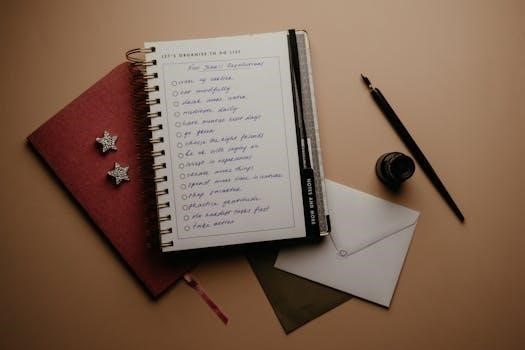Handwriting Without Tears Letter Formation⁚ A Comprehensive Guide
Welcome to a comprehensive exploration of Handwriting Without Tears (HWT), a curriculum designed to foster handwriting skills in children. This guide delves into letter formation techniques, resources, and the benefits of using HWT.
Handwriting Without Tears (HWT) is a renowned therapeutic curriculum designed to teach pre-printing, printing, cursive, and keyboarding skills to children of diverse abilities. HWT embraces a multisensory approach, catering to auditory, visual, and kinesthetic learners. The program emphasizes developmentally appropriate activities that enhance fine motor skills, spatial awareness, and body awareness. It aims to make learning letter formation a fun and memorable experience.
HWT’s curriculum progresses through stages, building a strong foundation for handwriting. It reinforces the alphabetic principle, ensuring automatic recall of letters. The program’s letter formation charts provide a child-friendly way to learn letters and numbers, encouraging practice both in the classroom and at home. With HWT, students develop the foundational skills necessary for automatic word recognition and overall writing proficiency.

What is Handwriting Without Tears?
Handwriting Without Tears (HWT) is a multisensory-based curriculum designed to make handwriting instruction engaging and effective for children of all learning styles. Developed to address the challenges students face in mastering handwriting, HWT uses a unique approach that focuses on building foundational skills, such as fine motor control, spatial awareness, and letter formation.
The program’s key elements include using simple, child-friendly language to describe letter formation, incorporating hands-on activities with materials like wood pieces, and presenting letters in a developmental sequence that promotes success. HWT also emphasizes proper pencil grip and posture, and its letter formation charts provide clear, step-by-step guidance. By integrating these elements, HWT helps students develop legible and fluent handwriting skills while minimizing frustration and tears.
Key Principles of the HWT Program
HWT centers on multisensory learning, developmental appropriateness, and simplified letter formation. It emphasizes building fine motor skills and spatial awareness, ensuring success and confidence in handwriting for all learners.
Multisensory Approach in HWT
The Handwriting Without Tears (HWT) program utilizes a multisensory approach, engaging auditory, visual, and kinesthetic learning styles. This method integrates various tools and activities, such as wooden pieces for building letters and tactile experiences for letter formation. Children learn through active participation, making the learning process more engaging and effective.
The multisensory techniques help reinforce letter recognition and formation, catering to diverse learning needs. By incorporating hands-on activities, HWT ensures that students grasp the fundamental skills necessary for handwriting success. This approach not only enhances letter formation but also improves fine motor skills, spatial awareness, and overall handwriting proficiency. The result is a comprehensive learning experience that supports children in developing legible and confident handwriting.
Developmentally-Based Curriculum
Handwriting Without Tears (HWT) follows a developmentally-based curriculum, carefully designed to suit children from preschool through second grade. The program focuses on building foundational skills like fine motor control and spatial awareness before introducing letter formation. Activities are tailored to each age group, ensuring that learning is both engaging and appropriate.
The curriculum progresses systematically, with each stage building upon previous knowledge. HWT emphasizes pre-writing strokes, grouping letters by difficulty and starting position, making it easier for children to learn and remember letter formations. This thoughtful approach ensures that students develop strong handwriting skills step by step, fostering confidence and proficiency as they advance through the program. The curriculum also addresses potential challenges, such as letter reversals, ensuring a solid foundation for future writing success.

Letter Formation in Handwriting Without Tears
HWT employs unique techniques to teach letter formation, emphasizing a multisensory approach. It guides students through simple steps, building automaticity and reinforcing the alphabetic principle.
Lowercase Letter Formation Techniques
Handwriting Without Tears (HWT) utilizes a structured, multisensory approach to lowercase letter formation, making it easier for children to learn and remember the correct strokes. The program groups letters based on shared pre-writing strokes, difficulty level, and starting position. This method streamlines the learning process, building confidence and automaticity.
HWT emphasizes a child-friendly approach, using simple language and visual cues to guide letter formation. Formation charts are readily available, providing a clear reference for both students and educators. These charts illustrate the step-by-step process, ensuring consistency in instruction and practice.
Through hands-on activities and engaging exercises, HWT reinforces letter recognition and formation. The program incorporates various sensory experiences, such as building letters with wood pieces or tracing them in sand, to cater to different learning styles. By integrating these techniques, HWT helps students develop strong handwriting skills while fostering a positive learning experience.
Uppercase Letter Formation Techniques
Handwriting Without Tears (HWT) simplifies uppercase letter formation by breaking down each letter into basic strokes and easy-to-follow steps. The curriculum emphasizes a consistent starting point and direction for each letter, promoting uniformity and legibility. Visual aids, like formation charts, provide clear guidance for students and educators alike.
HWT utilizes a multisensory approach to reinforce uppercase letter formation. Students may engage in activities such as building letters with wood pieces, tracing them in sand, or forming them with play dough. These hands-on experiences enhance kinesthetic learning and memory retention. The program also incorporates verbal cues and visual demonstrations to cater to diverse learning styles.
The HWT method prioritizes proper letter size and spacing, contributing to overall handwriting clarity. Worksheets and practice activities provide ample opportunities for students to refine their uppercase letter formation skills. By mastering these techniques, students develop confidence in their handwriting abilities and build a strong foundation for future writing success.

Resources for Handwriting Without Tears Letter Formation
Explore various resources for HWT letter formation, including downloadable PDF charts, practice worksheets, and online support materials. These tools assist educators and parents in reinforcing letter formation skills effectively.
Letter and Number Formation Charts (PDF)
Letter and number formation charts are invaluable resources within the Handwriting Without Tears (HWT) program. These child-friendly charts provide a visual guide to proper letter and number formation, making learning fun and memorable for children. Parents and educators can use these charts to reinforce correct stroke sequences and letter shapes.
These charts are available in PDF format, offering easy access and portability for use at home or in the classroom. They often include both uppercase and lowercase letters, as well as numbers, providing a comprehensive reference for handwriting practice. The charts clearly illustrate the starting points, directions, and steps involved in forming each letter and number, simplifying the learning process.
Furthermore, the PDF format allows for easy printing, enabling multiple copies for individual student use or classroom display. By utilizing these letter and number formation charts, children can develop a solid foundation in handwriting skills, leading to improved legibility and writing fluency.
Worksheets for Practice
Worksheets are essential tools for reinforcing letter formation skills learned through the Handwriting Without Tears (HWT) program. These worksheets provide structured opportunities for children to practice forming letters and numbers correctly and consistently. They often incorporate multisensory elements to engage different learning styles, making practice more effective and enjoyable.
HWT worksheets typically feature traceable letters and lines for independent practice, gradually increasing in difficulty as the child progresses. They may also include activities that focus on specific letter groups or common reversals, addressing individual learning needs. The worksheets are designed to promote proper letter size, spacing, and alignment, contributing to improved handwriting legibility.
Furthermore, many HWT worksheets incorporate visual cues and verbal prompts to guide children through the letter formation process. These cues help to reinforce correct stroke sequences and prevent the development of bad habits. Regular practice with HWT worksheets can significantly enhance a child’s handwriting skills, leading to greater confidence and success in writing. They support both in-class and at-home handwriting activities.

Benefits of Using HWT for Letter Formation
Handwriting Without Tears offers numerous benefits, including improved fine motor skills, enhanced spatial awareness, and reinforcement of the alphabetic principle. This leads to automatic word recognition for students.
Improved Fine Motor Skills
Handwriting Without Tears (HWT) places a significant emphasis on developing fine motor skills, which are essential for handwriting proficiency. The program incorporates activities specifically designed to strengthen the small muscles in the hands and fingers. These activities involve manipulating materials like pencils, crayons, and the program’s signature wood pieces.
By engaging in these hands-on exercises, children improve their dexterity, hand-eye coordination, and overall motor control. The HWT curriculum carefully sequences activities to gradually increase the complexity of fine motor tasks, ensuring that children build a solid foundation for handwriting.
Through consistent practice with HWT, students develop the necessary fine motor skills to form letters accurately, legibly, and with greater ease. This not only enhances their handwriting abilities but also benefits other areas of development that rely on fine motor control.
Enhanced Spatial Awareness
Handwriting Without Tears (HWT) actively promotes the development of spatial awareness, a crucial skill for successful handwriting. Spatial awareness refers to the ability to understand and perceive the position of objects in relation to oneself and other objects. In handwriting, it involves accurately positioning letters on a line, spacing words appropriately, and maintaining consistent letter size.
The HWT program utilizes various techniques to enhance spatial awareness, including using distinct lines on writing paper, employing visual cues to guide letter placement, and providing explicit instruction on letter formation. The program also incorporates activities that encourage children to visualize and mentally map out the letters before writing them.
By improving spatial awareness, HWT helps students write more neatly and legibly, avoiding common errors such as crowding letters, inconsistent spacing, and letters that float above or below the baseline. This ultimately leads to improved handwriting fluency and overall writing confidence.
Reinforcement of the Alphabetic Principle
Handwriting Without Tears (HWT) reinforces the alphabetic principle by connecting letter formation with letter sounds; The program emphasizes the relationship between visual letter representations and their corresponding sounds, strengthening a child’s understanding of how letters combine to form words.
Through multisensory activities, HWT engages children in kinesthetic learning, helping them physically experience letter formation while simultaneously associating the letter with its sound. This hands-on approach reinforces the connection between the visual and auditory aspects of language, making it easier for children to decode and encode words.
Furthermore, the program’s systematic approach to letter instruction, grouping letters based on similar formations, helps children recognize patterns and make connections between letters, further solidifying their understanding of the alphabetic principle. This enhanced understanding translates to improved reading and spelling skills, as children are better equipped to recognize and manipulate letters to form and understand words.
Transitioning from Print to Cursive with HWT
Handwriting Without Tears (HWT) offers a structured approach to transitioning from print to cursive handwriting. The program builds upon the foundational skills acquired in print, leveraging familiar letter formations to introduce cursive letters.
HWT cursive introduces letters in a logical sequence, focusing on similarities and connections between print and cursive forms. This approach minimizes confusion and allows students to smoothly transition to cursive writing, building upon their existing knowledge.
The curriculum employs multisensory techniques to engage students in the learning process, reinforcing letter formations through hands-on activities. This tactile and kinesthetic approach helps students internalize the movements required for cursive writing, leading to improved fluency and legibility.
Furthermore, HWT provides ample practice opportunities to solidify cursive letter formations and develop writing speed and stamina. By focusing on proper letter connections and spacing, the program helps students develop a fluid and legible cursive style, preparing them for success in higher grades.
